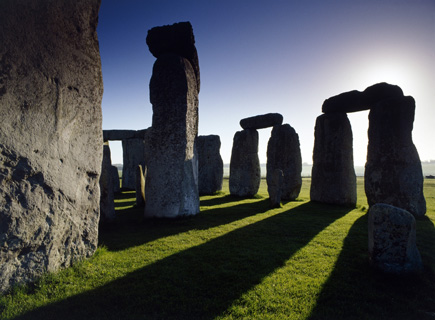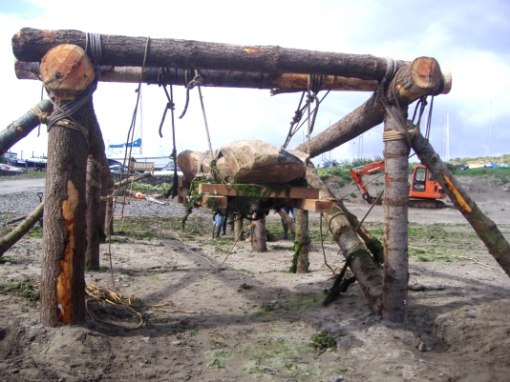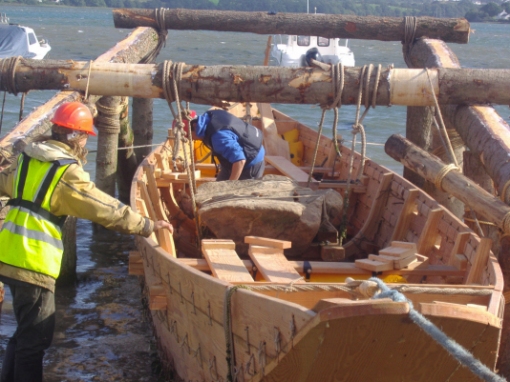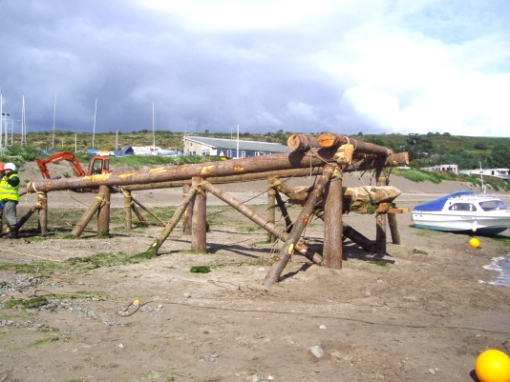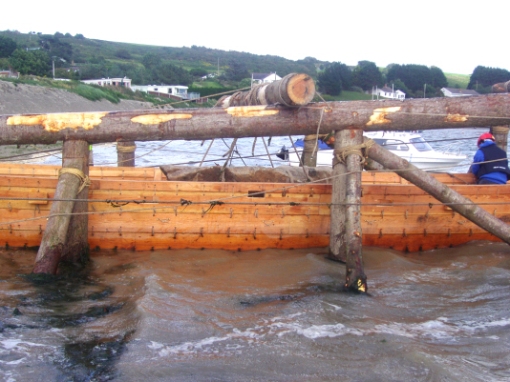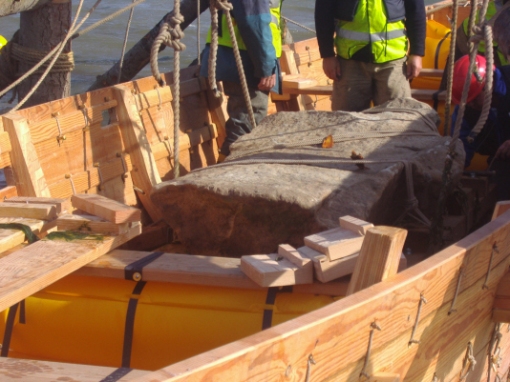Most detailed analysis yet of prehistoric stone circle shows how masons spent more time making key areas look the best
Like any corner-cutting modern builder, the ancient stonemasons who built Stonehenge lavished the most work and best materials where they would be first seen –shining in the last light of the setting winter solstice sun, or at dawn on the longest day.

Stonehenge: a digital laser scan has revealed tool marks from 4,500 years ago, and graffiti made by Victorian visitors. Photograph: Yoshihiro Takada/Corbis
The first complete 3D laser scan of the stone circle has also revealed tool marks made 4,500 years ago, scores of little axehead graffiti added when the enormous slabs were already 1,000 years old, and damage and graffiti contributed by Georgian and Victorian visitors.
The survey, carried out for English Heritage, exposes numerous details now invisible to the naked eye and will be used in displays for the long-awaited new visitor centre, due to open late next year. It shows the stones in unprecedented precision, from the double-decker bus height sarsens from Salisbury Plain that give the monument its unmistakable profile, to the smaller bluestones brought from west Wales by means still hotly debated, and the stumps of stones that have almost been destroyed.
It also confirms the importance of the prehistoric monument’s alignment on the winter and summer solstice. The largest, most uniform and most imposing stones, carefully shaped and dressed through hundreds of hours of work with stone hammers, were set where they would be seen first by people approaching the monument from north-east along the Avenue, a processional way that would have been particularly spectacular at the midwinter sunset.
In an epic piece of work, the stones facing in that direction were laboriously shaped to appear straight and regular, their original rough brown surfaces hammered away, or pick-dressed, to expose the lighter inner layer of stone, which when newly worked would have shone in the sunlight. The gigantic lintels that bridge the uprights were also elaborately worked to even their size and height.
In contrast, on the opposite side of the circle the builders only bothered to pick-dress the inner faces of the surviving uprights. The backs, they clearly reckoned, would never be studied in detail.
Clive Ruggles, emeritus professor of archaeoastronomy at the University of Leicester, said it was already clear that Stonehenge was one of the earliest examples of a monument aligned on the winter and summer solstices.
“Now we can see how the utmost care and attention was devoted to ensuring the pristine appearance of Stonehenge for those completing their final approach to the monument along the solstitial axis. The effect would have been especially powerful at the two times of year when the sunlight itself shone along the alignment – when those approaching had the midsummer rising sun behind or the midwinter setting sun ahead.”
Some hollows, cracks and lines interpreted in the past as carvings have been revealed as natural features, but what astonished Susan Greaney, an English Heritage historian and expert on Stonehenge, is the extent of surviving tool marks.
“Some are quite visible, and have long been noted, but the surprise to me was that everywhere we looked, on every surface, even on very weathered faces of stones which have been lying on the ground for centuries, we could see evidence of the stone working. On some you can see where different groups worked on different areas of the same stone – and with varying skills.”
Long after the monument was built, when Bronze Age burial mounds rich in grave goods began to be scattered across the plain around Stonehenge, and the archaeological evidence suggests those who could make or trade in metal goods had an almost shamanic status, people carved little images of daggers and axes, many now invisible to the naked eye, into the stones. Scores more have been revealed by the scan, including 71 new axe heads, bringing the total to 115 – doubling the number ever recorded in Britain.
“It is wonderful to have discovered so many more, but what is fascinating is that they are carved without regard to the importance or the siting of the stones – almost as if the people who carved them could no longer quite remember the significance of the monument and how it worked,” Greaney said.
Writing about the project in the new issue of British Archaeology, Marcus Abbott, head of geomatics and visualisation for ArcHeritage, and Hugo Anderson-Whymark, an Oxford based expert on ancient worked stone, note that the 850 gigabytes of data covering hundreds of faces of the stones were equivalent to 750m pages of printed text or 200,000 music files.
“Over the months we have recorded and scrutinised every square centimetre of Stonehenge in unparalleled detail, revealing over 700 areas of stoneworking, rock art, graffiti, damage and restoration.”
They processed the data digitally to strip away weathering and surface texture, and as well as revealing carved details, were able to show that some stones that now appear insignificant were originally much more imposing, but have either broken naturally or been quarried for building stone.
“Fallen stones were particularly vulnerable – the analysis suggests that six have lost tens of tons of stone – and as Stonehenge became a major tourist attraction in the 19th century visitors could actually hire chisels to hack away their own souvenirs.
For Greaney their work answers one of the Stonehenge mysteries – but leaves another unsolved. Some had suggested because some stones are so much less imposing and others are missing, that Stonehenge was never finished.
“I think we can say now that the monument certainly was finished – but where the stone went is still a puzzle. At Avebury you can readily see stone reused in nearby buildings from medieval times on, but Stonehenge is some distance from the nearest village, so it’s much less easy to see where the stone would have been taken – although we have looked far and wide, we have not succeeded in finding evidence of the re-use of the missing stones.”
Source: Maev Kennedy The Guardian,
Sponsored by ‘Stonehenge Guided Tours’ www.StonehengeTours.com
Merlin @ Stonehenge
The Stonehenge Stone Circle News Blog









